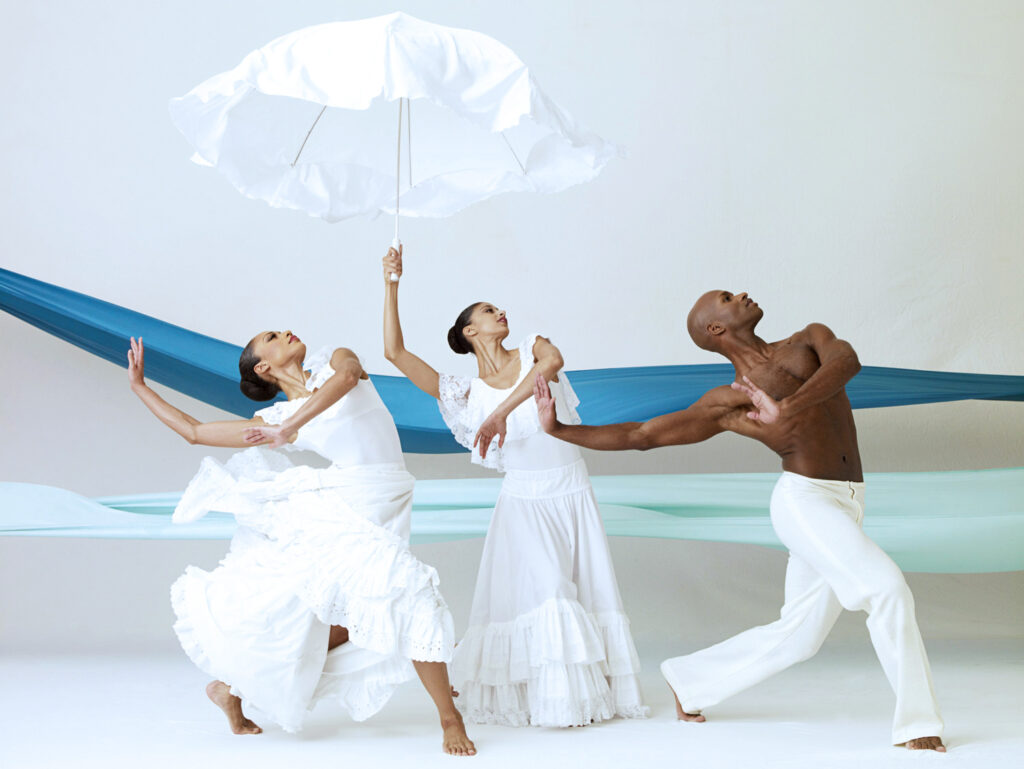Dancer, Educator, and Advocate Alicia Graf Mack Returns to Alvin Ailey American Dance Theater as Its Fourth Artistic Director
Last November, Alvin Ailey American Dance Theater announced that Alicia Graf Mack would become its next artistic director. Graf Mack’s trajectory seems to have prepared her for this role. During a brilliant career as a dancer with both Dance Theatre of Harlem and Ailey, she acquired two academic degrees on the side, in history and arts management. After retiring from the stage, she went on to become the director of The Juilliard School’s Dance Division, where she spent the last seven years thoughtfully expanding the august academy’s approach to dance training. Now, she has returned to Ailey, where her term as artistic director began on July 1. She is only the fourth person to hold the position, after Ailey himself, his chosen successor, Judith Jamison, and the choreographer Robert Battle.

You’ve spoken of how happy you’ve been at Juilliard and how connected you feel to the students and faculty there. How did you know that taking on this new role was right for you?
I’ve always been aligned with the mission and values of Ailey. So when I heard they were searching for a new artistic director, given all the knowledge and experience I’ve gained, it almost felt like I would be doing myself and the organization a disservice not to try. I’m always encouraging my students to trust that they have everything they need in order to move on to the next step, and telling them that they have to be brave. The things that are the most scary are probably the ones that you should think about. This was a very scary, big idea, and I had to take my own advice and step into the possibility.
What is it about Ailey and the company he created that drew you to it?
I was introduced to the Ailey company as a young child, through a VHS tape of Donna Wood performing Cry. I connected to it deeply: her fierce stance, her bravery, her grace, the way she moved, and how she could express so much through movement. It spoke to the very shy, quiet child in me, who loved to dance, loved to emote, but could not speak. There is something about the spirit of Ailey, the physicality of Ailey, the diversity of styles that the company explores—I really found a home.
You worked under the late Judith Jamison, for whom Cry was created, and who led the company for over two decades. How did she influence you?
Watching Judith Jamison was a master class every day: how she coached, how she held herself, how she addressed challenges. I see her as a blueprint for how to lead with integrity and excellence.
What do you feel you’ve been able to accomplish in your time at Juilliard?
With great support from the institution and faculty, we have expanded the idea of who a Juilliard dancer can be. It’s about creating a very rich environment for growth. I believe in the technical proficiency provided by ballet and modern dance, and I also believe that we have to move forward. The last seven years have really been about expanding in order to prepare dancers for a career in the 21st century: requiring hip hop, adding West African dance, creating a new media composition course, which proved so fruitful when COVID happened.
Do you have ideas about what you’d like to do at Ailey?
The thing I loved about dancing for Ailey was that I got to try on all these different ways of moving—I never felt the need to look elsewhere. I was performing Wayne McGregor, Rennie Harris, Ailey, Ronald K. Brown, Paul Taylor. That kept me alive and curious. So I want to continue to bring that to the dancers. The great thing is that the footprint is already there. I have a commitment to the legacy of Ailey, but I also feel that it’s important to lean on the bravery and pioneering spirit that Ailey had. It might look different now in the 21st century.

What does it mean to be part of Ailey at a moment of such turbulence in the U.S.?
I am reminded daily of the importance of the arts—specifically, the need to tell meaningful stories. Just like a historian, an artist’s responsibility to respond to the moment is amplified during times of crisis. Alvin Ailey founded the company in the midst of the civil rights era, when many of his dancers, and he himself, experienced extreme racism and social upheaval. I embrace the enduring message in Revelations: Where there is struggle, there is also unwavering faith. Ailey was unafraid to speak to that universal truth. I draw strength from his courage as we move forward in this moment.
What achievement or quality are you the proudest of?
I’m proud of my resilience. My time as a dancer could have ended in 1999, the first time that I was injured. But I held on to the love that I have for dance and movement. No matter what experience I was going through, the idea of movement, of moving forward and being community-oriented, kept me coming back to the work. That’s not easy to do.
The post Dancer, Educator, and Advocate Alicia Graf Mack Returns to Alvin Ailey American Dance Theater as Its Fourth Artistic Director appeared first on Dance Teacher.